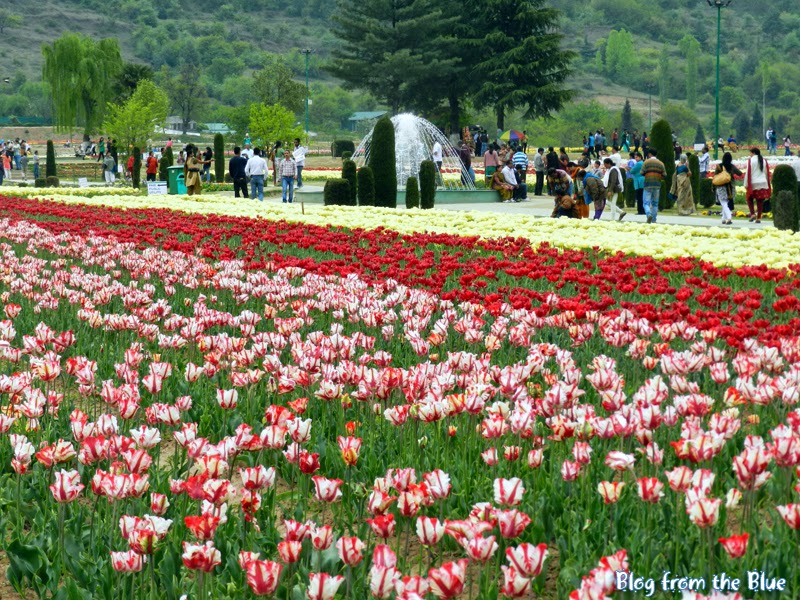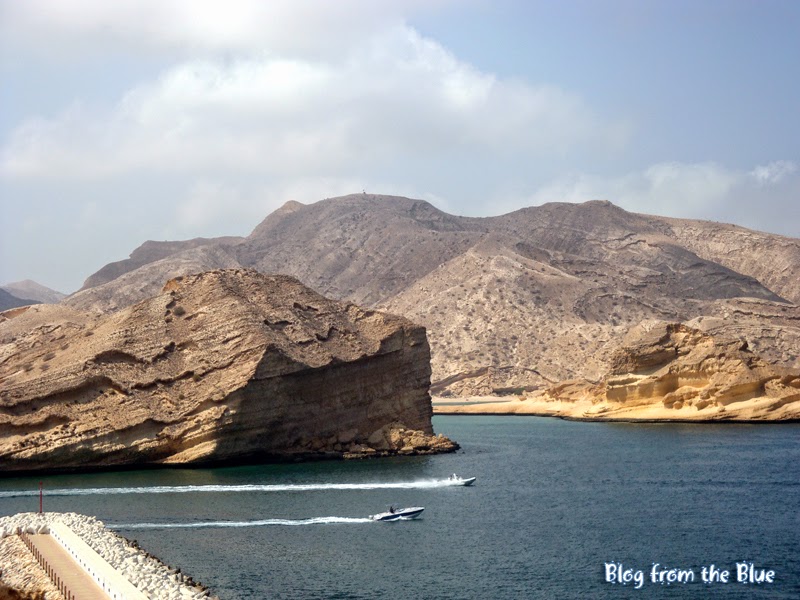Kashmir – a place that has been associated with Paradise since ages, a destination that has been every Indian’s dream to visit, a valley that has caught every traveller’s fascination, a backdrop that has been filmed by numerous Indian movies of the bygone days. My childhood dream of visiting this heaven on earth- mostly fuelled by the Eastman coloured Hindi movies and fascinating travel stories has been slowly fading away. Modern day Indian films too have ignored Kashmir and found many better backdrops abroad while the terrorists have found
I had to cancel once my planned trip to Kashmir due to the unrest in the valley. However, things
are changing and hope it will continue to change for better and the tourism in
this valley will prosper in days to come.
After much planning and thinking, one fine
day, we flew from Muscat to Srinagar
– the capital of Kashmir . It was April 2012, a
great time to visit the valley, a season when the Tulips bloom and the ice
starts melting. The situation of the valley was normal and tourists, mostly
Indians have packed out all the must visit sites!
The first view: As our plane was
approaching Srinagar
The Dal
Lake : The purpose of writing this
article is to tell you about the hundreds of years old magnificent gardens of Srinagar Srinagar is complete without mentioning the Dal Lake –
the jewel of Kashmir , a sprawling lake of over
25 square km right at the heart of the city. This is the lake from where river Jhelum has originated. Nagin
Lake and Wullar Lake Kashmir , be it the blooming
flowers, yellow mustard fields or a night stay at one of the many houseboats
across the length and breadth of these lakes. It’s truly an unforgettable
experience to stay on these houseboats floating over the scenic lake with a
panoramic view of the mighty snow clad mountains.
 |
| Floating market at Dal Lake, Srinagar, Kashmir |
This lake has found its place in many
creative works and continues to inspire the artists be it for a creative art or
for a lyrical masterpiece!
 |
| Shikaras at Dal Lake, Srinagar, Kashmir |
Shalimar Bagh: Way back in the year 1616,
Mughal emperor Jahangir built this beautiful garden for his beloved wife Noor
Jahan. Designed in Persian style, this garden is surrounded by Chinar trees and
is full of fountains, flowers and manicured gardens. The garden has got three
terraces – each one designed with a specific purpose. During the rule of the
Mughals, only the first terrace – known as Diwan-e-Aam was opened to the public.
The second terrace was reserved for the royal guests and aristocrats and it was
called Diwan-e-Khas. The third and the highest one called Zenana or Harem was
only for the king and his wives.
 |
| Shalimar Bagh. CC Image Courtesy shahbasharat https://flic.kr/p/5emPem |
Nishat Bagh: This is largest of all the
Mughal gardens of Kashmir . Designed by
Jahangir’s broder in law Asaf Khan, this garden was built in the year 1633.
Located on the eastern banks of Dal
Lake
All the terraces of Nishat Bagh have water pools coupled with fountains, the 11th one has the highest number of fountains, 25. The 12th terrace or the Zenana terrace was exclusively for the King and the royal ladies.
Nishat Bagh is at a distance of 25 km from the airport and can be reached by both road or a Shikara ride on the Dal Lake
All the terraces of Nishat Bagh have water pools coupled with fountains, the 11th one has the highest number of fountains, 25. The 12th terrace or the Zenana terrace was exclusively for the King and the royal ladies.
Nishat Bagh is at a distance of 25 km from the airport and can be reached by both road or a Shikara ride on the Dal Lake
 |
| Nishat Bagh. CC Image Courtesy mckaysavage https://flic.kr/p/6YkX4q |
 |
| Chashme Shahi Garden, Srinagar |
The name Chashme Shahi means the royal
spring and the garden is built around a spring. The water of the spring is
believed to have medicinal importance. The garden is designed in Persian style
and it overlooks the mighty Dal
Lake
This one is a tiny island garden located in
the  |
| Char Chinar Garden, Srinagar |
 |
| Pari Mahal, Srinagar |
The garden of Pari Mahal
 |
| Tulip Garden, Srinagar |
 |
| Tulip Garden, Srinagar |
 |
| Tulip Garden, Srinagar |
 |
| Tulip Garden, Srinagar |
Apart from these wonderful gardens and lakes,
1. How to reach:
2. Be aware: Keep a track of the latest
happenings in the state and if you come across any news of violence or unrest
in the region, do not hesitate to cancel the trip even at the last moment.
3. Be safe: Book the accommodation well in
advance. The tourists are often approached by stray agents, guides or porters.
Better to avoid them. Also, do not buy anything from roaming vendors who try to
lure the tourists to sell their products or services.
4. Be careful: Keep your belongings safely.
Never trust strangers.
5. Dealing with locals: Bargain hard. The
price is often overstated to the tourists, particularly the foreigners.
6. Things to buy: Kashmir is famous for Cashmere (Pashmina) shawls. You can buy it as a souvenir
or for your winter use, but only from a good store. Never buy from stray
vendors. You can also consider buying carpets and saffron (kesar).
7. Nearby attractions: Gulmarg, Pahalgam
and Sonmarg are some of the great places to visit while you are in Srinagar Kashmir
is full of natural beauty. Try to enjoy it as much as possible with a well
planned itinerary.
 |














































